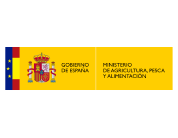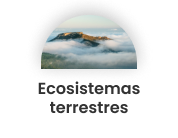
Influence of agricultural uses on the ecology of threatened wild species: the case of the barn owl (Alba II)
MITECO
Line of action:
Terrestrial ecosystemsStatus:
FinalizadoExecution date:
2019Total budget:
€28,308.40Amount of aid from the Biodiversity Foundation:
€19,656.44The barn owl (Tyto alba) is experiencing an accelerated decline in its populations in the centre of the peninsula. In 15 years it has gone from being an abundant and almost homogeneously distributed species throughout the Community of Madrid to having an alarmingly low number of pairs. According to the entity, agricultural intensification has caused variations in the selection and use of habitat or even in the feeding of the species, aspects that can have serious consequences on its population dynamics. Historically, owls and many other species have benefited from agricultural activity, which provided them with a habitat in which they had shelter and food. In turn, these species benefited crops by feeding on micromammals that cause them harm, such as voles.
The main objective is to make agricultural and livestock uses compatible with the conservation of endangered wild species, specifically the barn owl.
It has the following specific goals:
- To deepen the knowledge of those components of the ecology of the barn owl that affect its conservation in protected areas of the Community of Madrid.
- Promote changes in agricultural and livestock management that make this use of the territory compatible with the maintenance of the population of the species.
- Analysis of the changes in the distribution of the barn owl in the Community of Madrid through a comparison between the available breeding maps, from 1987 to 2018.
- Study of the current habitat selection of the barn owl through Geographic Information Systems (GIS) to evaluate a number of variables (vegetation, land use, infrastructures, etc.) in a circle of 1.5 km radius around each known nest.
- Study of the availability of trophic resources and the evolution of the diet of the barn owl by evaluating the diversity and abundance of micromammals in territories occupied for the reproduction of agricultural and livestock areas.
- Preparation of technical proposals to promote the conservation of the species based on the data resulting from the project.
- An analysis of the changes in the distribution of barn owls in the Community of Madrid has been carried out, a study of the current selection of the habitat and the availability of food in each of the occupied areas in order to generate technical proposals in order to reverse the negative trend of their populations.
- Specifically, the critical situation of the barn owl in the Community of Madrid has been evidenced through studies related to its reproductive ecology in different habitats in tune with livestock and agricultural land uses.
- The main factors involved in the regression of the species have been identified: the loss of quality of agricultural systems, which is a determining aspect; human action, the loss of nesting sites, mortality due to predation or competition with other species and an increasingly adverse climate.
- The guidelines drawn up to promote the conservation of the species in the Community of Madrid have been transferred to the competent authorities to promote changes in agricultural and livestock management that make these uses of the territory compatible with the maintenance of the population of the species.


Influence of agricultural uses on the ecology of threatened wild species: the case of the barn owl (Alba II)









 back to search
back to search